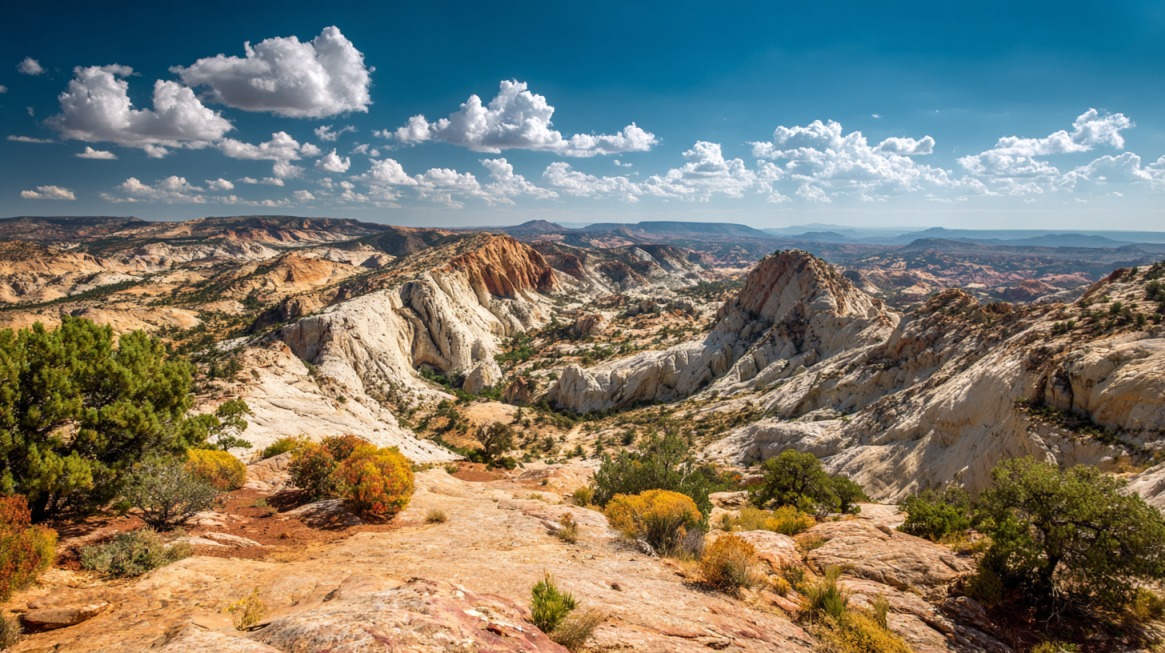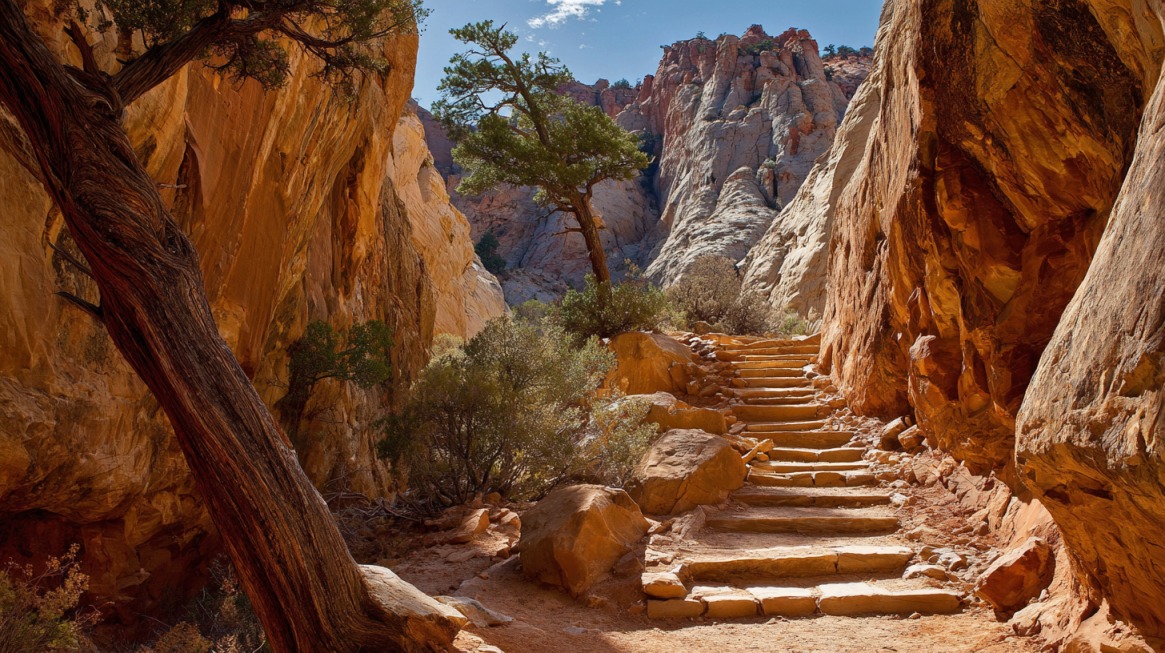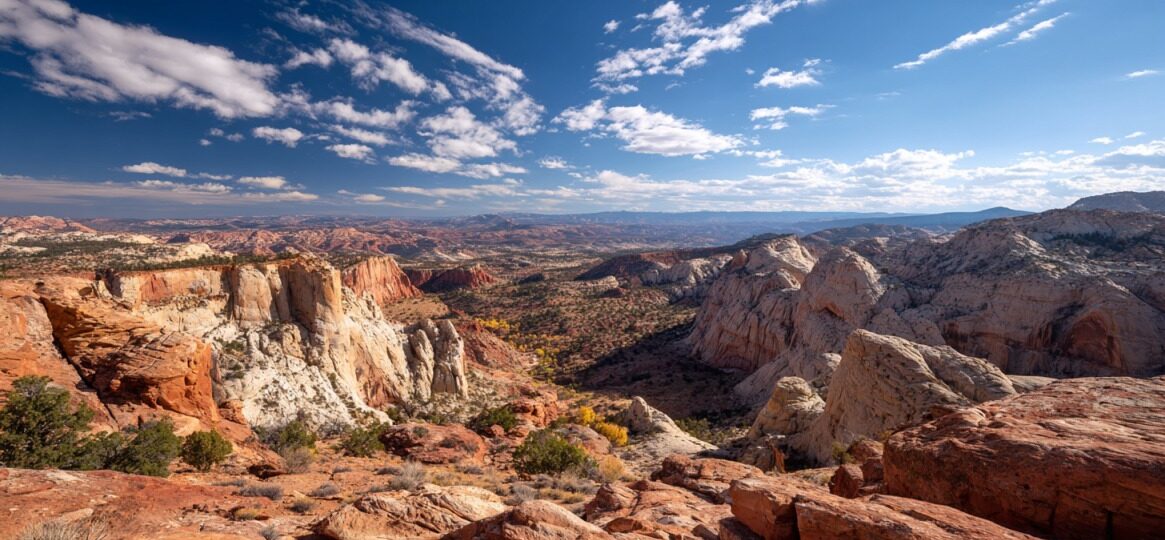Grand Staircase-Escalante National Monument offers a vast and rugged expanse filled with trails, cliffs, and canyons unlike anywhere else in the American Southwest.
Preparing for its terrain, climate, and remote character makes all the difference between a rewarding visit and a stressful experience.
A well-thought-out approach turns every stop into an opportunity for discovery and adventure.
1. Prepare for Remote and Rugged Terrain

Grand Staircase-Escalante National Monument covers 1.9 million acres of mostly undeveloped wilderness. Visitors must come ready for isolation and unpredictability. Many routes lead to areas with no road signs, unmarked trailheads, and almost no indication of civilization.
Dirt roads make up most of the access routes, and even known trailheads often go unmarked.
Cell phone service disappears across much of the region. GPS signals often fail, and digital maps may not load. Preparing for self-reliance is non-negotiable. Off-grid conditions challenge even seasoned adventurers.
- Printed or downloaded offline maps
- Local topographical charts
- Compass and GPS device
Before entering the monument, check:
- Weather forecasts
- Daylight hours
- Elevation profiles
Emergencies escalate quickly here. Trails that seem easy on maps might involve steep drops, stream crossings, or stretches of slick clay. Always notify someone of your route and expected return time.
2. Choose the Right Vehicle
Standard cars rarely make it far on monument roads. High-clearance, four-wheel-drive vehicles are recommended for almost every unpaved section.
Many popular trailheads lie far along rugged paths that test suspension and tire strength. After rain, flat dirt roads become impassable. Clay-heavy soil grabs tires and sinks vehicles. Road conditions can change overnight.
- Spare tires (more than one if possible)
- Tow rope and jumper cables
- Tire pump and traction boards
- Full tank of gas, plus reserves
Mechanical failures and flats occur regularly. Even short access roads often have sharp inclines, loose gravel, or soft sand. Navigation aids help, but sound judgment matters even more.
3. Visit During the Best Seasons

Visit During the Best Seasons – Grand Staircase-Escalante reveals its best side during spring and fall. March through May delivers moderate temperatures, blooming wildflowers, and pleasant hiking conditions.
September through November brings cooler days, colorful desert vegetation, and clearer skies.
Summer brings heat that regularly pushes above 100°F. Trails feel harsher, shade becomes rare, and dehydration risks increase dramatically. Water sources in the backcountry often dry up, and even short hikes can become dangerous without preparation.
Wildlife activity drops, and fewer people venture out due to harsh sunlight and risk of heatstroke.
Winter flips the equation. Snowfall at higher elevations can block access to trailheads and close roads. Daylight hours shrink, and nighttime temperatures fall below freezing. Visitor centers reduce hours or close entirely during colder months, and many lodging options scale back services.
Best months for balanced exploration, family visits, and scenic photography fall squarely in spring and fall. These periods bring the most reliable access and comfort for long days on trails or dirt roads.
4. Pack Essentials for Safety and Comfort
Success here begins with smart packing. Water remains the top priority, with at least one gallon per person per day and extra for delays.
Non-perishable food fuels long hikes and serves as backup in emergencies. Every person should carry personal supplies.
- Trail bars
- Jerky
- Canned items
- Dried fruits or nuts
Navigation gear keeps you on course:
- Downloaded GPS routes
- Printed maps
- Physical compass
Emergency items to carry:
- Shovel and tire pump
- Duct tape and jumper cables
- Fire-starting materials
- Flashlight and whistle
- Emergency blanket or tarp
- First aid kit
Footwear makes or breaks a trip. Lightweight shoes don’t survive on sandstone or creek beds. Use boots with ankle support and solid grip.
Add sunscreen, hat, and layers to handle extreme temperature swings.
5. Stop at Visitor Centers First
Visitor centers offer updates, maps, and valuable local advice. Trail conditions, weather patterns, and road closures can be confirmed before heading out.
- Escalante Interagency Visitor Center
- Kanab Visitor Center
- Cannonville Visitor Center
- Big Water Visitor Center
Some operate seasonally, so check schedules in advance.
- Detailed maps and printed trail info
- Ranger assistance and recommendations
- Exhibits on geology, wildlife, and history
Kids can participate in Junior Scientist programs, earning badges by completing fun, educational activities.
Even experienced hikers benefit from a quick stop to review their route and minimize ecological impact.
6. Respect the Land and Leave No Trace
Environments here recover slowly. Cryptobiotic soil prevents erosion and fosters plant life. One misstep can undo years of growth.
Artifacts and fossils remain unprotected. Do not touch, move, or remove them. Doing so erases historical context and breaks federal law.
- Stay on marked trails
- Camp only in designated areas
- Extinguish all fires fully
- Pack out all trash and waste
Human waste must be buried six inches deep and far from water or trails. Maintain silence to protect wildlife and preserve the experience for others.
View this post on Instagram
7. Hike Smart and Know Your Limits
Hiking options vary widely. Calf Creek Falls offers a relatively easy trail for families. Peek-a-Boo and Spooky require squeezing through narrow slots and climbing over boulders.
Willis Creek offers beauty without technical effort. Some trails require route-finding, sand navigation, or stream crossings. Distances can be deceptive.
- Hiking boots with ankle support
- Daypack with water and snacks
- Compass, map, and headlamp
- First aid kit
- Backup power source for electronics
Fatigue, dehydration, and poor planning remain major causes of search and rescue calls. Know your limits and hike with caution.
8. Base Yourself in a Nearby Town
Staying in a nearby town offers comfort and convenience. Escalante provides quick access to northern trailheads, with outfitters, stores, and cafes available.
Boulder offers a quieter setting. Hell’s Backbone Grill serves regionally famous meals. Lodging includes rustic inns and cabins.
Kanab gives access to southern sections and offers a broader range of services. It’s a strong option for travelers also visiting Zion or Bryce Canyon.
- Escalante: Best location for northern access
- Boulder: Quieter base with good food
- Kanab: Southern hub with lodging and tours
Each choice depends on your trail goals and comfort needs.
9. Enjoy Scenic Drives – But Know the Risks
Highway 12 delivers dramatic ridges and winding turns. Frequent photo stops make it a favorite route.
Hole-in-the-Rock Road feels remote and raw. Spanning 56 miles of unpaved terrain, it connects to numerous trailheads but requires preparation.
Expect slow speeds and rough conditions.
- Extra fuel
- Tire repair kits
- Printed maps
Rain transforms these roads into hazards. Always check the weather and road conditions before starting out.
10. Keep It Family Friendly (If Traveling with Kids)

Family trips work well with planning. Several sites welcome children with safe, accessible terrain.
- Devil’s Garden: Arches and hoodoos to explore
- Willis Creek: Shallow stream and walkable slot
- Grosvenor Arch: Easy access and scenic views
- Some slots, like Spooky, may intimidate younger kids. Parents should evaluate routes beforehand.
Family-friendly services include:
- Escalante Outfitters for gear and snacks
- Local diners with casual meals
Mixing adventure with comfort creates lasting memories for all ages.
Summary
Visiting Grand Staircase-Escalante rewards those who respect its scale and prepare thoughtfully.
With smart planning, appropriate gear, and a clear sense of conditions, each visitor can experience its most impressive features safely and responsibly.
By following these tips, every trip becomes more manageable, meaningful, and memorable.

